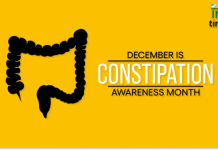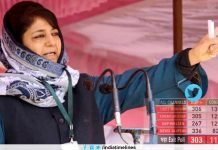
World Polio Day is observed every year on October 24th to raise awareness about polio, a crippling and potentially deadly infectious disease caused by the poliovirus. Despite monumental strides in eradicating polio over the last few decades, the fight is not yet over. This day serves as a reminder of the ongoing efforts to completely eradicate the disease from every corner of the globe and ensure that no child will ever again be paralyzed by polio.
The History of Polio and Its Global Impact
Polio, short for poliomyelitis, is a highly contagious disease that primarily affects children under the age of five. The poliovirus invades the nervous system, and in the most severe cases, can lead to irreversible paralysis. It can spread through person-to-person contact, particularly through the fecal-oral route or, in some cases, through contaminated water or food. While the disease may seem like a relic of the past in much of the world, it continues to pose a serious threat in certain regions.
In the early 20th century, polio outbreaks were common and widespread, causing significant fear and devastation in communities. It wasn’t until the introduction of the polio vaccines—developed by Jonas Salk in 1955 and Albert Sabin’s oral vaccine in 1961—that the world began to witness a drastic reduction in polio cases.
The Birth of World Polio Day
World Polio Day was established by Rotary International, a global humanitarian organization, to commemorate the birth of Jonas Salk, who led the team that developed the first polio vaccine. The day is dedicated to acknowledging the progress made toward eradicating the disease and recognizing the efforts of health workers, researchers, and volunteers who work tirelessly in this global fight.
Rotary has been a key player in the Global Polio Eradication Initiative (GPEI) since its inception in 1988. With partners like the World Health Organization (WHO), UNICEF, the Bill & Melinda Gates Foundation, and governments around the world, GPEI has spearheaded vaccination campaigns that have brought the world to the brink of eradicating polio.
The Polio Eradication Initiative
The Global Polio Eradication Initiative (GPEI) was launched in 1988 when polio was endemic in 125 countries, paralyzing around 350,000 children each year. Since then, GPEI has achieved remarkable progress. By 2021, the number of polio cases had been reduced by 99.9%, with only two countries—Afghanistan and Pakistan—remaining polio-endemic.
The polio eradication campaign focuses on three pillars:
- Vaccination: Ensuring every child receives the oral polio vaccine (OPV) or the inactivated polio vaccine (IPV).
- Surveillance: Monitoring and tracking the spread of poliovirus in communities through laboratory testing and environmental surveillance.
- Outbreak Response: Rapidly responding to any detected cases of polio to prevent further spread.
The Role of Vaccines in the Fight Against Polio
Vaccination is the cornerstone of polio eradication. The two types of vaccines used to combat polio are the oral polio vaccine (OPV) and the inactivated polio vaccine (IPV). Each plays a critical role in the global eradication effort.
- OPV: The oral polio vaccine is easy to administer and provides excellent immunity in the gut, which is the main site where poliovirus replicates. It contains weakened forms of the poliovirus, which stimulate the immune system to produce antibodies without causing the disease. OPV has been crucial in interrupting person-to-person transmission, especially in areas with poor sanitation and hygiene.
- IPV: The inactivated polio vaccine is given as an injection and contains an inactivated (killed) virus. It is highly effective in providing immunity to polio, but it does not stop the spread of the virus in the environment as efficiently as OPV. IPV is often used in combination with OPV in many countries to ensure comprehensive protection.
Together, these vaccines have been instrumental in reducing polio cases worldwide.
The Challenges That Remain
While the progress toward eradicating polio has been remarkable, the final steps are proving to be the most challenging. Several factors contribute to the persistence of the disease in the remaining endemic countries:
- Political Instability and Conflict: Areas of conflict, particularly in Afghanistan and Pakistan, make it difficult for health workers to reach all children with the vaccine. Violence and insecurity hinder vaccination efforts, and sometimes healthcare workers are even targeted.
- Misinformation and Vaccine Hesitancy: In some communities, misinformation about vaccines has fueled fear and resistance to vaccination campaigns. In both Afghanistan and Pakistan, certain factions have spread false claims that the polio vaccine causes infertility or other health problems, undermining eradication efforts.
- Inaccessibility: Remote and hard-to-reach regions, especially those with poor infrastructure, make it difficult to deliver vaccines. Additionally, populations on the move, such as nomadic groups or refugees, are hard to track and vaccinate.
- Weak Health Systems: In some countries, weak health systems and lack of funding have made it difficult to sustain robust polio vaccination campaigns. Health infrastructure must be strengthened to maintain progress and address other public health issues alongside polio.
Recent Progress and Innovations
Despite the challenges, the world has made notable strides toward eliminating polio altogether. Several innovations have been introduced to overcome the obstacles to polio eradication.
- Environmental Surveillance: In addition to tracking polio cases through medical diagnoses, public health officials now use environmental surveillance to detect poliovirus in sewage systems. This allows authorities to identify areas where the virus is circulating and target them for vaccination campaigns.
- New Vaccine Technologies: The development of novel oral polio vaccines (nOPV) is an exciting advancement in the field. These new vaccines are designed to reduce the risk of vaccine-derived poliovirus, which can sometimes occur with OPV. nOPV aims to maintain the benefits of the oral vaccine while reducing its risks.
- Mobile Health Teams: To reach remote and conflict-affected areas, mobile health teams equipped with vaccines and medical supplies are deployed. These teams often work in coordination with local leaders to ensure that even the most isolated communities are vaccinated.
Polio’s Ripple Effect: Strengthening Health Systems
One of the lesser-known benefits of the global polio eradication campaign is its positive impact on health systems worldwide. The infrastructure established to fight polio—such as vaccination supply chains, disease surveillance systems, and trained health workers—has been utilized to combat other diseases and respond to health crises.
During the COVID-19 pandemic, for instance, polio workers were instrumental in the distribution of COVID-19 vaccines and in providing health information to communities. The legacy of polio eradication efforts extends beyond the fight against one disease, strengthening global health security as a whole.
What Can You Do on World Polio Day?
World Polio Day provides a platform for individuals, communities, and organizations to raise awareness and advocate for the global eradication of polio. Here are some ways you can contribute:
- Spread Awareness: Use social media and other platforms to educate others about the importance of polio eradication. Share facts, statistics, and stories that highlight the progress made and the work still needed to achieve a polio-free world.
- Donate to the Cause: Organizations like Rotary International and the Bill & Melinda Gates Foundation are at the forefront of the fight against polio. Contributions to these organizations help fund vaccination campaigns, research, and outreach efforts.
- Advocate for Government Support: Encourage your government representatives to continue supporting polio eradication programs, both domestically and internationally. Political will and funding are crucial to maintaining the momentum toward eradication.
- Volunteer: In many countries, volunteers are needed to assist with vaccination campaigns and to spread awareness in local communities. Look for opportunities to contribute your time and efforts to these initiatives.
Looking Toward a Polio-Free World
The eradication of polio is within reach, but it requires continued commitment, innovation, and collaboration on a global scale. A world free of polio will not only spare millions of children from paralysis but also free up valuable resources to address other global health challenges.
On this World Polio Day, let us reaffirm our dedication to finishing the job. The world has come so far, and the end of polio is in sight. With the concerted efforts of governments, health organizations, volunteers, and ordinary citizens, we can ensure that future generations will never have to face the devastating effects of polio again.
India Time Lines
Conclusion
World Polio Day is more than just a day of commemoration—it is a global call to action. The progress made over the last few decades demonstrates that polio can be eradicated, but the final push will require the collective effort of everyone. As we observe this important day, let us remember that the fight against polio is not only a battle against a virus, but also a movement toward equity, health, and hope for all children around the world.



































